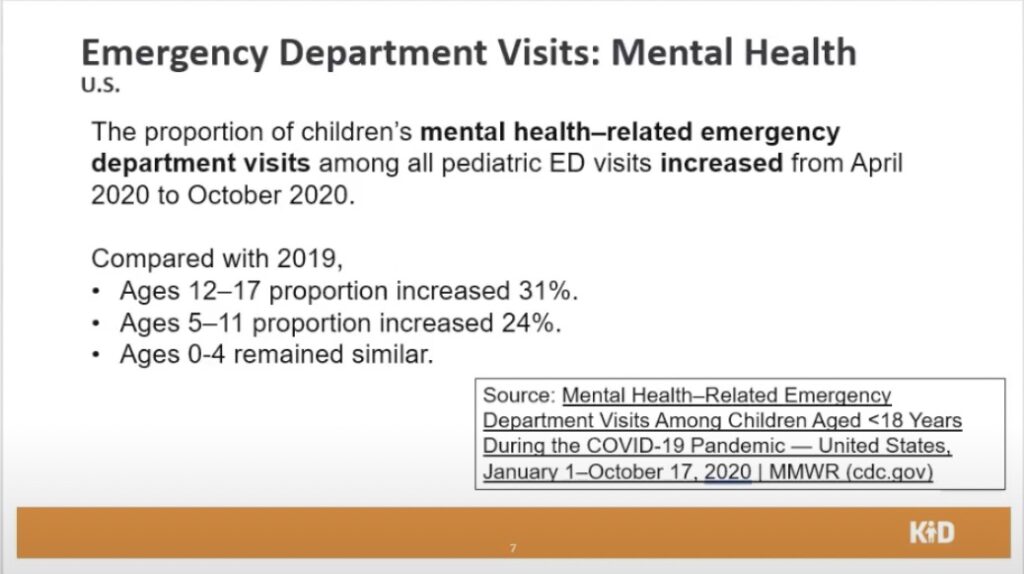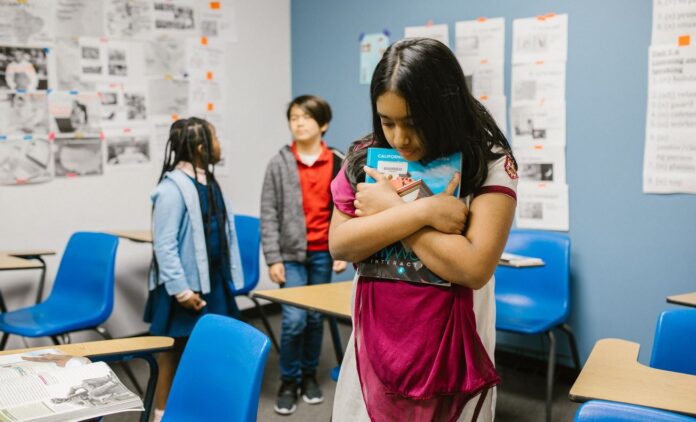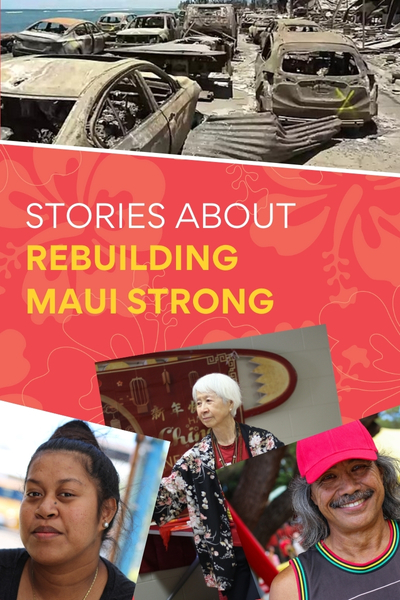By Akemi Tamanaha, AsAmNews Associate Editor
Experts are voicing their concern over the lack of resources to address the mental health crisis among the youth of color in America.
Last week, the U.S. Surgeon General issued an advisory, blaming the pandemic for a spike in the youth mental health crisis.
Michelle Doty Cabrera said at a recent news conference held by Ethnic Media Services that the number of children and youth in acute mental health crisis shot up “two, sometimes three-fold.” Cabrera is the Executive Director of the County Behavioral Directors Association.
“Children as young as eight years old have been hospitalized due to suicidal ideation,” Cabrera said.
Lori Turk Bicakci, a director for the KidsData program at the Population Reference Bureau, said the proportion of children’s mental health-related emergency department visits increased especially for youth ages 5-17.

There is no singular culprit
The pandemic has impacted youth mental health in different ways, according to those at the news conference.
Stay at home orders meant that some children would spend more time in abusive households.
Gabii Legate, the director of operations at Blossoming Minds, says that LGBTQ youth have had to live in unsupportive households. According to a Trevor Project survey, 80 percent of LGBTQ youth said the pandemic made their home life more stressful.
Cabrera, however, noted that there have been higher rates of crisis among children returning to school. She said it is unclear why the rates are higher.
Youth of color have also had to cope with their own specific stressors. Racism has had a substantial impact on youth mental health.
Ulash Thakore-Dunlap, a full-time faculty member at the Wright Institute and a member of the AsAmNews South Asian American Advisory Board, said at the press conference that AAPI youth are experiencing racial trauma because of the increase in racially motivated attacks against Asians. Rhetoric blaming Asians for the pandemic has also contributed to the racial trauma.
Thakore-Dunlap added that AAPI individuals have stated that the racism they’ve experienced because of the pandemic has often been more distressing than the pandemic itself.
Black youth, in particular, have been anxious about their health and the health of their community during the pandemic, according to Dr. Latonya Wood, the director of Clinical training at Pepperdine University. Black youths themselves are 2.5 times more likely to be hospitalized and five times more likely to die from covid than White children.

Inadequate Available Servies
Experts at the press conference voiced their concern about the lack of currently available mental health services. Financial barriers have made it difficult for young people to access the appropriate services. While many hoped that the pandemic would increase the use of telehealth services, Dr. Wood noted that many people don’t have access to the right technology.
The wait to get help can be long even for those who can afford it. Bicakci said she called several intensive day treatment programs in the California Bay Area. Most programs didn’t have openings for at least two months.
Cabrera says there is a workforce shortage in the mental health field. Many health care professionals who do not specialize in mental health services are trying to help treat youths without the appropriate training.
Practicing psychologists and therapists also feel they are being stretched thin.
“Personally speaking, I can say that during the pandemic, we have been overworked,” Dr. Wood said.
Dr. Wood has not taken on youth clients for several years. During the pandemic, she began working with a Black teenage girl who could not find appropriate services for months. She is concerned that young people are struggling to connect with psychologists and therapists who specialize in youth behavioral health.
Dr. Wood also said she had experienced a ten-fold increase in referrals from clients of color who were seeking therapists of color.
The current pool of active psychologists lacks diversity. A 2020 survey from the American Psychology Association found that 84 percent of active psychologists identified as White, while 4 percent identified as Black, 4 percent identified as Asian, 6 percent identified as Hispanic, and 2 percent identified as Native American. Thakore-Dunlap says the numbers are similar for therapists and social workers.
Young people want to work with therapists or psychologists from similar cultural backgrounds to them. According to Dr. Wood, Black youth said they felt like their therapist or psychologist did not understand their lived experience in a survey about mental health during the pandemic.
Culturally competent mental health services are also important for the parents of youths seeking services, said Thakore-Dunlap.
Where do we go from here?
Experts at Ethnic Media Service’s news conference voiced their support for solutions geared towards expanding and diversifying youth mental health services.
“We need to have more pipeline programs where we can have actually more Asian counselors to serve our Asian youth,” Thakore-Dunlap said. “We need to diversify our workforce.”
In the meantime, she believes services should provide cultural competency training for psychologists and therapists who are not people of color.
Bicakci wants schools and training programs to encourage students pursuing careers in mental/behavioral health to specialize in youth behavioral health.
“If we address these problems among the youth, that is long term,” Bicakci said.
Cabrera believes everyone can do more to help. People often make incorrect assumptions about who is or isn’t struggling with their mental health, she said.
“I would just encourage us all to be a part of the change by reflecting internally, looking at our own internalized stigma, and really listening to young people about what they want and what they need,” Cabrera said.
AsAmNews has Asian America in its heart. We’re an all-volunteer effort of dedicated staff and interns. Check out our new Instagram account. Go to our Twitter feed and Facebook page for more content. Please consider interning, joining our staff, or submitting a story, or making a contribution.


